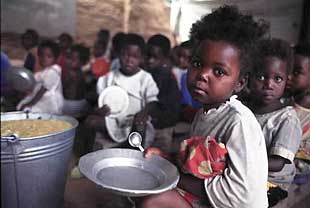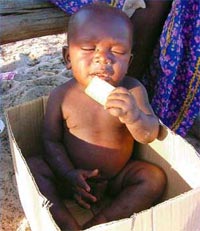| |


The
first case of HIV in Angola was detected in 1988; however, very few
systems were put into place to detect further cases. To a large
degree, HIV/AIDS was ignored while the country waged an internal war
that displaced approximately one-third of its population. The
country’s large number of internally displaced persons (4million)
who have now returned to their homes, together with increased
contact with military personnel, low levels of education, a young
population (nearly 70% of Angolans are under 24), a high poverty
index, weak female autonomy, few protection mechanisms, destroyed
social networks, very few places where people can have an HIV test
voluntarily and confidentially and only one hospital in the entire
country where treatment (ARVs) is provided to people living with
HIV/AIDS. Add to this: Angola is sexually charged country
(with the world’s second highest fertility rate), where 70 percent
of women have had at least one baby by the age of 20, and more than
half the population is uneducated & its a recipe for disaster.

Full country name:
Republic of Angola
Capital: Luanda
Area total: 1,246,700 sq km
Population: 12,127,071 (July 2006 est.)
People living with HIV/AIDS: 240,000 (2003 est.)
Major infectious diseases: degree of risk - VERY HIGH
food or waterborne diseases: bacterial and protozoal diarrhea, hepatitis A, typhoid fever
vectorborne diseases: malaria, African trypanosomiasis (sleeping sickness) are high risks in some locations respiratory disease: meningococcal meningitis
water contact disease: schistosomiasis
Language: Portuguese (official), Bantu and other African languages
Religion: indigenous beliefs 47%, Roman Catholic 38%, Protestant 15%
Government: republic, nominally a multiparty democracy with a strong presidential system
Climate: semiarid in south and along coast to Luanda; north has cool, dry season (May to October) and hot, rainy season (November to April)
Natural Resources: petroleum, diamonds, iron ore, phosphates, copper, feldspar, gold, bauxite, uranium
Major Industries: petroleum; diamonds, iron ore, phosphates, feldspar, bauxite, uranium, and gold; cement; basic metal products; fish processing; food processing, brewing, tobacco products, sugar; textiles; ship repair
Imports partners: US 37.7%, China 35.6%, Taiwan 6.7%, France 6.4%
Illicit drugs: used as a transshipment point for cocaine destined for Western Europe and other African states

|
|

